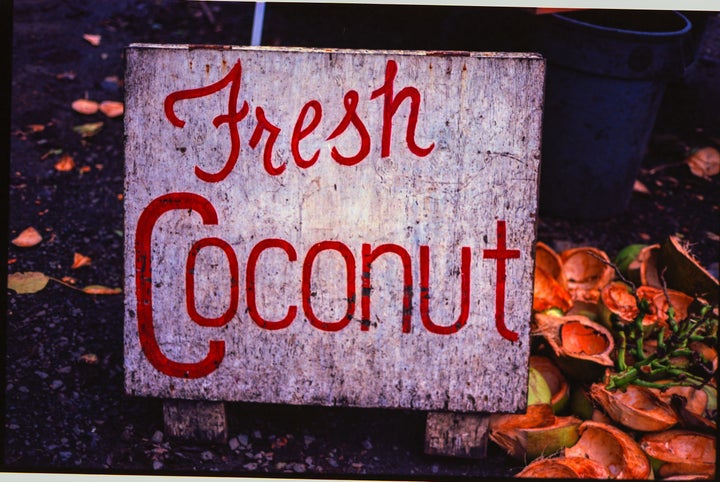
A snapshot taken on Kodak Portra 100, in Kauai over Thanksgiving
I report my observations about film photography to offer an opening for others to share their own accounts. These notes are not original, nor made with technical expertise about optics and imaging. All of us who like making pictures, I would submit, are enjoying the ongoing process as much as the finished product. I had read with fascination what others had written about this same exhilaration of discovering film for themselves, but I did not understand it except through experience for myself. By this story, I encourage you. I did make a pinhole camera out of an oatmeal box, back in 1972. That likely was the apex of my pre-digital photography, notwithstanding a couple of darkroom courses.
Here are the technical details. I bought a Contax G2. It is pre-owned of course, since the storied manufacturer is long out of business in its German and Japanese iterations. This model was introduced to the market when I was half the age I am now. That explains in part why I was attracted to it, because it was one of those elegant objects you aspire to own but cannot afford, at a point in life when it makes an indelible impression on your younger self, and you feel more than the crass thrill of acquisition when you finally can possess it later in life. As with film photography itself, when it comes to collecting vintage cameras, there is much to be said in favor of deferred gratification.
The Contax G2 is a rangefinder, not an SLR, but automated, not manual. It remains the antithesis of its rival, the Leica. With its nosily clanking, single point autofocus system, coupled with an awkward dial on the front of the body if you wish to do it yourself, it is not for purists about mechanical devices. Yet with a titanium body and a set of Zeiss lenses, loaded with batteries, it has always been something of a cult classic. It is compact but solid, unique in design. I acquired the proprietary 45mm and 90mm lenses. I also bought an adapter to allow mounting of the glass on the digital mirrorless Lumix that was my re-introduction to this hobby. The 45mm lens is the legendary piece of kit that supposedly inspires some to convert to this system. My particular unit had a bit of fungus, as if someone had left a fingerprint on the inside. A friend informed me that used equipment from humid environments is prone to this problem. I had to send it away for professional servicing. These are the risks you take with internet purchases. I have no regrets.
After a half dozen rolls of film (everything from Ilford Pan F 50 to Fujifilm Velvia to expired Kodak Gold), I have a few tentative observations. I likely will revise these. I'm curious what others have to say. Talking about an avocation is an integral means of participating in it.
I will start with an statement intended to avoid controversy. But the very nature of controversy is it cannot be circumvented. I begrudge nobody who takes issue with me respectfully. Here is my non-assertion: I would not say the pictures from film photography are "better" than those from digital photography. They are different.
Although the final generation of film cameras were superior to the earliest digital cameras, the former have ceased to change while the latter continue to improve. The Contax G2 is wonderful. But it does not have image stabilization or the range of lenses of my MFT retro-look GX8. The shutter speed is slower at its fastest and ISO 3200 film is too costly for regular use.
A side by side comparison would be absurd controlling all variables but film versus digital. I like to shoot a telephoto distances, in low light, and at telephoto distances in low light. I cannot mount a 70mm-200mm zoom on the Contax G2, and it cannot produce anything useable under distant urban street lamps. Thus if I went out with the film camera I have and the digital camera I have, doing what I usually do, switching back and forth, I'd have blurry, opaque film counterparts to sharp, naturalistic digital scenes. No observer would deem the former better than the latter unless they were aiming for low-fi effects.
As anyone who curious to experiment probably would, I have made a few pairs of matching photos, under fair conditions in the sense of good weather and equitable for assessment. I also shoot with a "normal" focal length and in daylight. To my eye, the film and the digital photos each have their own qualities. I am interested in both looks. I have not done a "blind" test, but I think I could spot the analog in a pile of the digital. But the analog traditionally is displayed an album, while the contemporary digital is stored in the cloud -- any pile of digital photos is a pile metaphorically only. Both are representations. Film is film; digital is data. Other than the cliche about being less clinical, I'd say the film photo is more of what I recall as a photo, as I choose orange juice from concentrate over fresh and fake maple syrup over real; the preference might be nothing more than an artifact of my personal history, and the next generation will not have the same reference point. Film is softer, smoother, more of a continuous function than a step function. Digital is edited to introduce “grain” in simulation.
What is more important to me is that shooting with film is fun yet harder. Perhaps the excitement will taper off as I become more familiar with the Contax G2, but I have to say it feels great in the hand. In a manner I cannot express eloquently, the ergonomics are perfect for my dimensions and the click of the shutter button offers more satisfaction. Since I am not a professional who has to deliver a set of wedding poses on a deadline, I am looking for what gives me pleasure. I am attracted to how involved film is, not put off by the trouble it takes. A film camera delivers the satisfaction of the tangible. The results suggest that I have much more to learn. Even though I can scan film and manipulate it in digital form, the actual composition is not as easy.
The more accurate description may be that I appreciate film more than digital. I have to be more disciplined with film. My standards are correspondingly more strict for myself. It costs money for the film and the developing. I am not satisfied if one shot of a dozen turns out to be decent, with the others to be discarded -- since they cannot be deleted, they will stay there as a negative, literally and figuratively. The physicality and permanence of the medium compels me to be more thoughtful.
So even if a film camera is not better than a digital camera, a film photographer probably is better than a digital photographer, unless he is a wastrel. I am composing with greater care. I want the straight-out-of-camera image to be if not perfect then not in clear need of manipulation. The benefit extends beyond photography. I am a better person with a film camera because I am patient. The deliberate pause enhances daily life. Data suggests that students writing notes by hand with pen on paper are demonstrably learning more thoroughly than their peers typing them on a laptop, even though they cannot produce text as rapidly -- the very limit precludes them trying to transcribe without thought. In what seems antiquity, the late cultural critic Susan Sontag reflected on how photography has made us voyeurs. The tendencies have accelerated since then, of our non-intervention in lives, even our own; the selfie is an alternative to engagement with the world around us.
Despite the renaissance of film (”#filmisnotdead”), I doubt it will bounce back. Things bounce, but not back. The law of entropy ensures that whatever our aspirations. The sales volume shows not that film is increasing market share meaningfully, or being consumed in absolute volume terms all that much more, but only that its decrease in popularity is not as severe. It's a leveling off on the negative trend. Film has become, like fountain pens or vinyl records, a product with a devoted following that is not the mass market once commanded. Time was every middle-class home had at least a point-and-shoot, as businesspeople used a Parker Duofold and teens sought Billboard hits on LP albums. For that matter, digital cameras are threatened by smartphones with computational and UI advantages and conveniences. Film cameras are not vulnerable, since they are already obsolete.
Although a specific camera has enabled me to take up film photography again, after a twenty-five year hiatus, I have learned to resist "gear acquisition syndrome." A bonus of film photography, in contrast to digital photography, is you can afford what is the very best confident it will not be surpassed. To embrace film photography is to embrace the art and craft. Technique should be a priority over technology. I'm thinking I should return to the darkroom. More to come.
